Breaking stereotypes in metalworking with Nikita Adickes of CTEK
Nikita Adickes, a fabricator and project manager at Orange County, California-based architectural fabrication shop CTEK, discusses her passion for metal fabrication and her nontraditional journey in the industry. She shares her experience working on various projects, including architectural art installations with the likes of Frank Gehry and James Turrell. Nikita also talks about the challenges she faces as a woman in a male-dominated field and the importance of proving herself through project managing, hard work, and dedication.
CTEK was founded by Nikita's father, Eric Adickes, in 1993.
Nikita also mentions her love of automotive customization and interest in exploring other trades, such as carpentry and glassblowing.
At the top, hosts Dan Davis and Lincoln Brunner offer their takes on FABTECH 2023.
Email us at podcast@fmamfg.org with any comments, questions, or suggestions.
In This Episode
Learn more about FMA's Coil Processing Workshop and Tours
Learn more about Nuts, Bolts & Thingamajigs Awards Gala.
Check out Matt Tyler Designs
Check out Matt Tyler's weld blending course
ABOUT THE FABRICATOR PODCAST
The Fabricator Podcast brings you conversations with people in manufacturing who make things out of metal. We speak with manufacturers, metal fabricators, welders, job shop owners, small business entrepreneurs, artists, marketers, educators, and more. Host Dan Davis also goes beyond discussing just manufacturing and the skilled trades, and chats about pop culture, current events, food, music, movies, comedy, and, of course, robots. The Fabricator Podcast is presented by the Fabricators & Manufacturers Association.
Host: Dan Davis
Producer/Editor: Gareth Sleger
Video Producer/Editor: Brandon Geier
Ad writer/spokesperson/social media: Sara Spring
Additional video editing: Dana Wiker
Graphics: Billy Kulpa
Marketing support: Elizabeth Gavin, Mary Diamond
Sales support: Andy Flando, Amy Hudson
Web support: Mike Owens, Jared Carlow
Additional support: Ed Youdell, Maurine Semevolos, Lincoln Brunner, Tim Heston, Rafael Guerrero, Josh Welton, Darla Welton, Amanda Carlson-Hicks, Callie Check, Rick Lehnhardt, Judy Steinbach.
Where to listen to The Fabricator Podcast:
Follow The FABRICATOR:
- YouTube
TRANSCRIPT
Nikita Adickes: Like you said, we've got the men in suits and the women in boots today.
Lincoln Brunner: Nice.
Nikita Adickes: I wore my overalls, just because this was most comfortable. I was like, "I'll be my most authentic self here."
Dan Davis: That's a pretty good tagline.
Gareth Sleger: You never know when someone's going to put you to work.
Nikita Adickes: It's like, I don't know if I could throw a weld over there or something.
Sara Spring: It's almost time to celebrate manufacturing's finest contributors at the annual Nuts, Bolts & Thingamajigs Awards Gala. This fun and exciting evening supports the next generation of manufacturers by raising funds for scholarships and educational programs. Help build tomorrow's skilled workforce by attending or participating in the online silent auction. Bid on artwork and other unique items throughout the evening from anywhere. Get all the details at gala.nutsandboltsfoundation.org.
Dan Davis: All right. Hello, Dan Davis from The Fabricator magazine.
Lincoln Brunner: Lincoln Brunner from Tubing Pipe Journal.
Dan Davis: And we're here at FABTECH 2023 in Chicago, first day.
Lincoln Brunner: Exciting day.
Dan Davis: Yeah. And I made the mistake of saying, "I can't believe it's been a year," and then someone noted it hasn't been a year.
Lincoln Brunner: Yeah, 10 months.
Dan Davis: So yeah, welcome to a September FABTECH. The one day it happens to be raining where there hasn't been any rain in Chicago for like two months.
Lincoln Brunner: Right. Well, better than snow in November.
Dan Davis: Yes. Other than that, pretty good beginning to the show.
Lincoln Brunner: Oh yeah.
Dan Davis: I think a lot of people, there's a lot of excitement in terms of the metal fabricating industry. Keep moving forward and staying on top.
Lincoln Brunner: The booths are crowded today.
Dan Davis: Yeah.
Lincoln Brunner: I mean, there's a lot of booths that it's hard to find space to look at the exhibits. It's one of those things where you wonder, okay, day one, how's it going to go? And it seems like the attention span is long and the interest is high.
Dan Davis: Yeah. So have you seen anything of interest?
Lincoln Brunner: You know, honestly, I'm kind of trying to get back to basics in this one. Things like grinding wheels. I went and saw and like okay, sometimes you think, well, that's basic technology, been around a long time. Actually turned out to be fairly interesting. So I'm not discounting anything this time. I am going to go and look in every nook and cranny, but the actual R&D work on a certain company's grinding wheel was of interest just because of all the work that went into doing something that a lot of people take it for granted.
Dan Davis: Yeah. So a lot of automation. It's kind of exciting to see.
Lincoln Brunner: Absolutely
Dan Davis: In applications where perhaps you haven't seen it in the past, but...
Lincoln Brunner: Oh, I have yet to really explore all the AI applications that are being developed right now and being displayed. I haven't even really gotten into that aspect of it yet. We've got three more days.
Dan Davis: Yeah. So I think you'll enjoy this conversation with our guest, Nikita Adickes of CTEK.
Lincoln Brunner: Extremely bright young woman.
Gareth Sleger: Structural shop out of California. She came a long way. She said she came from work, is flying back and going straight back to work.
Dan Davis: So she literally came to Chicago for a visit to FABTECH and lunch.
Lincoln Brunner: She's on a deadline.
Gareth Sleger: I think just to do this, just to do this.
Dan Davis: The power of The Fabricator Podcast.
Gareth Sleger: She came in wearing her steel-toed boots.
Dan Davis: Right. She's ready. So enjoy this episode of Two Guys in Suits and a Guest in Her Work Boots.
Lincoln Brunner: Yeah.
Dan Davis: Thank you.
Sara Spring: FMA's Coil Processing Workshop heads to Toledo. During this two-day workshop, you'll connect with industry colleagues and gain insight into your toughest processing challenges. The small group setting includes facility tours for you to see equipment in action and discover new solutions for cutting, splitting, leveling, safety, and more. For more information and to register online, please visit fmamfg.org. And now, back to the episode.
Dan Davis: Thank you for joining us on another episode of Guys in Suits. We're taping this live.
Lincoln Brunner: Except our guest.
Dan Davis: I guess we'd be taping it dead. But anyway, we're at FABTECH 2023 here in Chicago. We're joined today by Nikita Adickes of C-T-
Nikita Adickes: E-K.
Dan Davis: E-K. CTEK.
Nikita Adickes: CTEK.
Dan Davis: And it stands for?
Nikita Adickes: Creative Technologies Corporation.
Dan Davis: That's it. Nikita describes herself as a fabricator, an auto enthusiast. And what are some other modifiers that you use online?
Nikita Adickes: I would describe myself as an architectural fabricator, project manager, and an automotive customization shop. I do that as well. So pretty much I do a lot of automotive, customization, fabrication, and then architectural world I do architectural fabrication, leading the team and project managing. Majority of the work I do is just about that. And so that extends into all materials and a lot of niche products and materials that we get to work with in the industry.
Dan Davis: And CTEK stands for?
Nikita Adickes: Creative Technologies Corporation.
Dan Davis: And how long has that been around?
Nikita Adickes: The company's been running for 30 years. I've been there for seven.
Dan Davis: Okay.
Nikita Adickes: Yeah.
Dan Davis: So your background always, had an interest in metal fab or?
Nikita Adickes: Yeah, so basically my background was, I was always into cars, very much so in my younger years, that was always kind of the start of that industry or hands-on type of work. And then my father started the company 30 years ago and I just about graduated high school. He said he needed some help on a project for Frank Gehry, if you've heard of that name before, he's a well-known architect. And it was just pretty much some grunt work and I said, "Yeah, why not?" I've always loved architecture, I've always seen him work around it, I've always wanted to give it a shot. So I said, "Yeah, why not? I'll get in the shop and try out some grunt work." And that's exactly what I did. And here I am seven years later almost running the company, in maybe five years, we'll see.
Lincoln Brunner: Hint to dad, hint to dad. That's amazing that you would just kind of dovetail so seamlessly into the family business.
Nikita Adickes: Yeah, definitely.
Lincoln Brunner: That's really cool.
Nikita Adickes: Yeah, it just goes to show if you're interested in something and you have passion about it, it could take you a really long way. And that's pretty much exactly what I did. So like I said, it was just kind of the grunt work, it was pretty much just starting in the shop and I noticed that I was not only super natural at it but I also really loved it. It was super fascinating to me. And then the more I was around it, the more I really got into just every single aspect of the fabricating and industry. So going from the architects to the drawings, to the installation, to the manufacturing, to the fabricating, to the final artwork and the artist, the entire process just absolutely took me over.
Nikita Adickes: And then on top of that, the strengths of the materials, that is what blew my mind the most. And what really drew me in was actually getting to work with materials and just this building above our roof head, just the amounts of loads, pressure, tensile strengths, everything happening around us just started really coming into play. I started really observing and really just appreciating the industry, the fabrication behind it and what went into it, and then the material strengths that went into it as well. It all just really, really intrigued me.
Nikita Adickes: And so I just kind of every year got more into it, pushed myself harder, observed, learned from my peers. Self-taught Most of my stuff. My father taught me a lot of my stuff, I self-taught a lot, and then a lot of it was trial and error and just spending the absolute ridiculous hours in the shop, like I said. So I think the only reason why I'm able to spend such ridiculous hours in the shop is because I love it so much and that it just kind of feels like a secondary home almost to me. So I've definitely just, I got into the fabrication career in 2017 and I've just let it take me and I've tried to make my stand in the fabrication industry as well. So like you said, we've got the men in suits and the women in boots today.
Lincoln Brunner: Nice.
Nikita Adickes: I wore my overall just because it was most comfortable. I was like, I'll be my most authentic self here.
Lincoln Brunner: Love it.
Dan Davis: Nerds in suits.
Nikita Adickes: I was like, I don't know if I could throw a weld over there or something, you know?
Lincoln Brunner: There might be someone in need of some machine work over there.
Dan Davis: So in high school, did pre-2017 Nikita, would anybody have an idea that she'd be doing what she's doing now?
Nikita Adickes: You know, I've always been a super spontaneous kind of hands-on hardworking gal, so I'm pretty sure they wouldn't even doubt it. Because I was super into cars in high school and I've always, I was working... The kind of deal was if I got straight As for a couple of years, then my father would help me build my car, like in the shop space. And so that was obviously a big thing. So I was saving up for a car and I had super big motivation to get a car, so I was always talking about it and always kind of just doing crazy stuff, so they wouldn't doubt it for a minute. They would be like, "That makes sense that she ended up like how she is right now."
Dan Davis: So what was your first ride?
Nikita Adickes: My first ride, well, a crappy hand-me-down car. It got me through high school, but I saved up for a Subaru BRZ. So I bought that from the junkyard for a couple of thousand bucks and then I rebuilt it, it was a piece of scrap metal pretty much. It had total exterior body damage, a little bit of suspension damage. The engine was perfectly fine. I restore salvage cars if you guys have seen on my social media before, so that was my first salvage car that I restored by myself.
Nikita Adickes: And so like I said, my father helped me, he guided me. I did as much as I could. Obviously I was mostly doing all the work and it was my beginning of fabrication, so the more detail oriented stuff I had help with. We re-welded on a rear quarter panel, my buddy Elvis helped me on with that. But the body work and Bondo work, I pretty much did all that. And then I started souping up everything. So I got a fun wide body kit, a fun little race car suspension, and all the fun stuff you could throw into those cars.
Dan Davis: Obviously taking that car to places where you can achieve speeds, where you need all that. Not on the public roads.
Nikita Adickes: Yeah. I mean, the Subaru BRZ, a hell of a lot of speed.
Dan Davis: Of course not, children...
Lincoln Brunner: Nobody in Southern California drives too quickly.
Nikita Adickes: Yeah, so that was technically my very personal first car. Yeah. The Subaru BRZ. So I still have that, it's still my awesome, I still daily, I daily a car that's like two inches from the ground every day. It's static so you can't adjust the suspension. But yeah, it's fun. I love it. I love it. I loved the community environment, I loved working until 2:00 AM on it, and everything that's gone on in my life.
Dan Davis: Yeah. You still doing work on it?
Nikita Adickes: Just right now, not really. Just like nails in the tire and if I had bumped my splitter, I got to repair it, some stuff like that.
Dan Davis: So what were some of the vehicles you jumped into after that?
Nikita Adickes: So some of the cars, I mean I've restored after that was a Honda S2000 for my brother, I've done a Camaro for my sister, I helped a little bit on that, but the S2000 for my brother I was super, super hands-on. And then we've done a couple Audis, a lot of Audis, a lot of Audis. I just restored a shop car. We have an Audi A4 Allroad for the shop, just to daily.
Dan Davis: Allroad, wow.
Nikita Adickes: Yeah, it's awesome. It's like a little sedan type... Not a sedan, but it's a little shorter van style, but it's awesome. And then I just restored that and then I did another Audi A7, and I've got a supercar in the works behind the scenes that I haven't been able to share anywhere, but that's also been a huge priority of mine behind the scenes. That's been going on for about eight years.
Lincoln Brunner: I'm looking at your Instagram feed, you got videos of yourself just doing all the grunt work on a trunk lid and a fender, all that stuff, and very patiently, very hands-on. But you're talking about also really being geeked out about the higher level stuff, like the metallurgy and tensile strengths and things.
Nikita Adickes: Yes.
Lincoln Brunner: I mean, so it's kind of a broad base of interest in metals. What jazzes you most?
Nikita Adickes: What jazzes me the most? That is such a good question. I would have to say the strengths of everything, honestly. Like when I see something, and I understand that, we run through tests, strengths on all our materials. If we're working with epoxy, we'll get certified testing and stuff like that done for all the engineering and obviously to make sure we're all doing our job. And seeing the application, we achieved 5,000 pounds per one square inch off an epoxy.
Dan Davis: Wow.
Nikita Adickes: So one square inch has got to hold your truck of just this little dot of epoxy. And so we formulated the technology of the application beforehand and after-hand to achieve that. And so it is a 3M epoxy, but the application beforehand is what gives you that results. And so once I got the results that high and only for one square inch, I was like starstruck and I just felt amazing and I just felt so into this, like everything and just amazing. I think that that's what amazes me the most is how strong the materials are. Even like an eighth inch piece of stainless steel that could hold a thousand pounds. It's crazy. All this stuff just, it really fascinates me.
Nikita Adickes: And then the materials, of course, I've worked with really cool materials, so that really fascinates me as well. My favorite part is definitely seeing all the components come together with the material, with all of the fascinating aspects behind it. So mostly we are an architectural art company, like I mentioned before, and we do fabrication, engineering, installing, consulting. So our job is mostly to get the most beautiful seam. Seaming is a delicacy in its own, as you guys know. It's a craftsmanship, it's an art piece on its own. So to get the fastening system right where the artist is happy, we're happy, it's engineeredly happy, secured safely, a beautiful seam, a beautiful fastening job, that, it makes me happy. I get really happy. If something's beautifully fastened, it looks beautiful, the material is shining, I'm super, super stoked. That gets me really happy.
Dan Davis: So what percentage of the work with CTEK involves that type of art?
Nikita Adickes: The entire company.
Dan Davis: So it's primarily that.
Nikita Adickes: Yeah, it's primarily, we do primarily large scale architectural art projects, whether that's a building cladded with some sort of art scape, you know like The Broad Museum? CTEK engineered that. Oh, Los Angeles, I'm sorry, I forget you guys are from Los Angeles, but it's in Los Angeles and it's just an entire building cladded in a beautiful design. And then Frank Gehry's one of our huge clients. He loves working with us, we love working with him. We work with a lot of his titanium buildings, good titanium cladding.
Nikita Adickes: So those are some larger scale. One was a three-story house, The Broad Museum was an entire facility as big as this convention center. And then there's some smaller scale ones that are, you know, an amazing bronze infinity dining table, that was somebody's dining table. And then there's a little cube, some smaller scale cubes. So pretty much we do art fabrication and it's mostly about there. So sometimes they get as big as structures, sometimes they're just as small as little personal art projects in somebody's home or in front of a structure.
Lincoln Brunner: Well, Frank Gehry's a big deal. I mean, he's one of those architects mentioned in Oceans 13. It's like-
Dan Davis: The official sign that you've made it.
Lincoln Brunner: That's right. If you're mentioned by Brad Pitt in an off-color... Not an off-color, as an offhand comment. Yeah, no, that's interesting. So how did you establish the relationship with him?
Nikita Adickes: Well, that would have to be my father, Eric, back in 1995, I believe. So CTEK was established and CTEK was doing show cars at the time and really was just kind of making outstanding beautiful art clay models and smaller scale art projects. And so Frank Gehry was looking for a glass art piece. And Eric, he's an extremely, extremely smart man, and he was doing complex glass at the time. Do you guys know the difference between complex and compound glass?
Lincoln Brunner: I do not.
Nikita Adickes: So complex glass is going to be one radius and then one side, compound glass is convex and concave. So you're going like this, you're going up and down, all around. He was looking for a compound glass project and nobody in the world was successful or could pull it off exactly how he wanted, his standards, Frank Gehry's standard. Eric and Frank met through, I believe, a referral, and Eric was like, "I can do that." And so he went ahead and his company was the first company to ever attempt to make compound glass, and he was successful and it was in a completely amazing outstanding structure and it's in Manhattan, New York, in the Condé Nast cafeteria. But it's an outstanding, outstanding installation. That is how that relationship started.
Nikita Adickes: So we provided an amazing engineering, one-of-a-kind design, world-leading technology, and Frank Gehry immediately knew he wanted to work with us from that point forward.
Dan Davis: And had faith that there would be the same success with all kind of metals.
Nikita Adickes: Of course, yeah. So like I said, we love working with Frank. Frank, I can probably say, loves working with us. We do have letters of recommendation and that relationship's going on for 30 years plus. So we have probably over 10 projects with him, probably 10 or 15.
Dan Davis: Wow.
Nikita Adickes: Yeah.
Lincoln Brunner: So what is the story behind the titanium house?
Nikita Adickes: The titanium house, so I guess the technical name would be like a floating beach house was the concept behind it. It is right in Marina del Rey, right to the left, about 20 feet away is the beach and the sand. So the story behind, we got commissioned, Frank Gehry came to us for a architectural project. As you can see, it was in the drawing phase, that's just typically how things start with us. Somebody has a design and art and they say, "We want to build this. Give us a proposal. Is it feasible? Is it manageable? And we are pretty much the reality checkers that say, "Okay, we can do this, we can fasten it like this and we can make your dream happen." So Frank Gehry came to us with this project, and these amazing clients, Carol and Roy, but they came to us, CTEK gave him a quote. We said of course we could do it with Frank Gehry's craftsmanship and skill level. And they accepted our quote, they're super familiar with us, and we went ahead and fabricated, engineered and installed that.
Dan Davis: And titanium was the choice because of corrosion resistance?
Nikita Adickes: Titanium is Frank Gehry's signature material.
Dan Davis: Oh wow.
Nikita Adickes: Yeah, so he does other materials, but it's really his signature material. So most of his... Well, Disney Concert Hall, that's titanium.
Dan Davis: Really? I didn't know that.
Lincoln Brunner: Which concert hall?
Dan Davis: Disney.
Nikita Adickes: And then I'm pretty sure he has a building here that's made of titanium. I'm almost positive he has a building here that's made of titanium, which I'm going to go check out today. And pretty much his signature material because it lasts forever. The anodization, that's a tongue-twister. It lasts an extremely, extremely long time and extremely well. So those beautiful colors you saw in that video, there was rose, pink, champagne, and like a silver. Those are going to remain those colors for a solid 20 years. The Walt Disney Concert Hall, that thing is buffed and polished almost weekly or monthly. So that will hold its colors probably for decades and decades, but ours, every client maintains their own piece a certain way. So I mean, they maintain it an extremely well amount, but it's corrugated so it's a little more difficult to scrub and wax and stuff like that. Anyhow, that's how that project started. That was 2017, that was my first project.
Dan Davis: Really? That's a hell of a first project.
Nikita Adickes: Yeah.
Dan Davis: Here's my talk show question of the day. If you had a signature metal, what would it be?
Nikita Adickes: Like a material or metal?
Dan Davis: Either/or.
Nikita Adickes: I think bronze is really beautiful.
Dan Davis: There you go.
Nikita Adickes: I think bronze is really beautiful. I love the patina and I love how you could just grind it off and make it shiny again. And I like its natural aspect and the colors of that way for sure. Titanium probably would be second up.
Dan Davis: There you go.
Nikita Adickes: Would probably be second up.
Lincoln Brunner: If you could work on any project, architectural, automotive, aerospace, anything tomorrow, what would it be?
Nikita Adickes: Tomorrow? It'd be the project I'm currently working on because we're on this crazy deadline and I did book this trip before I had realized I had the deadline. So I pretty much came from the shop to the airport and I'm pretty much going to go straight back to the shop after the airport.
Dan Davis: This is like a long lunch break?
Nikita Adickes: This is a lunch break for me, flying to Chicago.
Lincoln Brunner: Nice.
Nikita Adickes: I really feel like, yeah. But anyways, no, but I mean just like that was legit because it's such a deadline right now. Like, the guys are getting stuff done, but I think-
Lincoln Brunner: What can you give away?
Nikita Adickes: Like that I worked on previously or just-
Lincoln Brunner: No, no, what is that project you're talking about right now?
Nikita Adickes: Oh, it is... Well, I have to be a little bit secretive with it, so I'll give you the details I can share. It's a hundred-foot metal sculpture, it's going to be made out of stainless steel and it's going to be cladded with a form of aluminum, and it is going to be going out of state. I won't be installing it because it's out of state, but it's going to be pretty much ready to be buttoned up, fabricated, installed with an Allen key, IKEA status.
Lincoln Brunner: Wow.
Dan Davis: When is that supposed to be completed?
Nikita Adickes: November 1st. It's going to be ready for shipping on a truck. It's going to be installed before December 7th.
Lincoln Brunner: Oh wow.
Dan Davis: Where is it headed?
Nikita Adickes: Yeah. Extremely... Huh?
Lincoln Brunner: So maybe not in the Midwest.
Dan Davis: Where is it headed?
Nikita Adickes: I don't know...
Lincoln Brunner: What country is it headed for?
Nikita Adickes: It's in Florida. It's in Florida.
Lincoln Brunner: Okay, there we go.
Nikita Adickes: I'll say that. It's going to Florida.
Lincoln Brunner: Yeah, it's middle of November, you're probably not installing it in Idaho.
Nikita Adickes: Yeah.
Dan Davis: How many projects do you that come through the shop on an annual basis?
Nikita Adickes: It depends. We can handle a couple projects at once. However, like I mentioned, we've been building a supercar, and so the shop's kind of in between building a supercar and building amazing architectural projects simultaneously. So we've had our hands full with building a supercar and we've been taking on architectural projects whenever it comes our way. But typically, we're very particular about the type of architectural projects we commission. Normally they're very beautiful, one-of-a-kind, very hard engineering, special material, special art piece type of projects we do take on. But I'd say a good year would be three projects. A regular year is one project.
Nikita Adickes: And that typically takes about six months to one year depending on the project. So this one we got commissioned last minute. CTEK is giving it their all. Obviously we can handle it, it's just a short time amount for anyone, so everyone's on overtime. This project is only going to be about five months because of the crazy deadline, but I had a project last year that was one year long. That was a really long time. And then I've had a couple that last six months.
Dan Davis: How many people are in the shop?
Nikita Adickes: It ranges between 10 to about 30.
Dan Davis: No kidding. Wow.
Nikita Adickes: Yeah. It depends. So if there's a lot of projects going on, we'll subcontract more fabricators and subcontract more skilled hands. If we've only got a little bit, like our typical schedule going on, then about 10 in the shop, and then there's other facilities and people doing work at their own office and stuff like that.
Lincoln Brunner: I'm curious, with your interest level and so many things technical, why not pursue engineering?
Nikita Adickes: Why not pursue engineering? Because I love to get my hands dirty. I could just put in some music, grind something, make something beautiful for 18 hours and sleep like a baby. So engineering, I feel like I'm not really a computer... I love engineering, I think it's amazing, but I couldn't see myself at a computer for more than 18 hours a day without getting fried. But I could be in the shop for 18 hours a day and he'd be smiling at the end of 18 hours.
Lincoln Brunner: Yeah, makes sense.
Nikita Adickes: So that's why. Definitely.
Lincoln Brunner: Makes sense.
Nikita Adickes: Yeah.
Dan Davis: What kind of fabricating capabilities do you have in the shop?
Nikita Adickes: In the shop? So pretty much obviously basic fabricating, just like you can be a floater, but I can pretty much do anything, I guess. I'm a welder, project manager, the lead fabricator, I'm leading the team, I'm co-leading the team right now with Eric. So he's handling half the team, I'm handling the other half of the team. I can lead, I can obviously use all the machinery, all the heavy machinery.
Dan Davis: So which type of machinery is in the shop?
Nikita Adickes: Oh, like magnetic drills, presses, power tools, obviously all the good stuff, all the welders, I can weld multiple materials. And then mechanical, I'm super mechanical so I can do all the mechanical stuff, building stuff, building the motors. Some projects have motors involved and mechanical aspects. It's not just glass or composites or just metal. There's motors and moving parts involved. So I'll be able to build and mechanically handle all of that. So I'm the mechanic there as well. And I feel like I'm blanking right now because I'm on the spot. I'll look back and be like, "Why didn't you mention half things you do?" But yeah, pretty much everything in the shop, I am there.
Dan Davis: Do you get the same buzz that you would get on working on cars as you do some of the artistic stuff?
Nikita Adickes: Yeah, it's definitely different. It's definitely different on what I'm doing. So if I'm building a wide body kit for a car and I'm doing composite carbon fiber work, I'm a little annoyed because I'm itchy, I'm covered in gear, I'm hot, you're breathing in the epoxy, you got your respirator on, and it's a lot of work. But if I'm doing mechanical stuff, like if I'm working on the suspension, if I'm doing some Bondo work and I'm just laying out some nice lines, then that's pretty enjoyable. I could just crank out to some music.
Nikita Adickes: So it really just depends on what I'm doing in all aspects, because composites is also in architectural projects as well. We do a lot of composite work and carbon fiber and fiberglass and epoxies. So it's the same thing. Like, if I'm doing a composite project for work, I'm kind of like, ugh, covered in gear, itchy, really dirty, dirty work. All the guys, I mean, I work with grown adult males who are just as tired as I am by the end of the day. And I'm doing obviously just as more or just the same amount of work as everyone there. But it just depends on what I'm doing. So if I'm working on suspension stuff and the engine, I'm pretty happy. If I'm doing Bondo work, I'm pretty happy. But if I do composite work, I've grown... because I'm kind of covered in gear, sweating and I'm itchy.
Lincoln Brunner: Tell us about the community of like-minded people in Southern California. Who do you go and kind of talk shop with there?
Nikita Adickes: Well, right now, obviously everyone on our shop row, we're all gotten pretty close. Our shop's been there for 10 years, so we're all like family there. The beers will start coming out after 5:00 and the music will start playing and everyone's just having a good time and community and chatting and stuff. Right now, I spend a lot of time in the shop right now, just being very honest. I'm just working on my career, I'm really into the shop, I'm really into my project. So if I'm not there then I'm most likely home right now.
Lincoln Brunner: Yeah, sure.
Nikita Adickes: But I found a really cool, I just started posting fabrication content on my social media. So that was only a year. Before, it was strictly car stuff and just kind of my fun personal life and only the BRZ stuff. And then I obviously was like, you know, I'm doing some really cool stuff in the shop and I totally got to share this with everyone and show how dedicated and passionate women can be in the shop, because everyone... you know the stereotypes and this and that. So I started sharing just about a year ago fabrication and all the projects and stuff like that.
Lincoln Brunner: And Instagram is proven to be quite the marketing tool for businesses in this arena.
Nikita Adickes: Yeah, it's not too bad. It's hard recording and fabricating. So hard, but I'm trying my best, that's for sure.
Gareth Sleger: What caught our eye about you was your work with the James Terrell projects.
Nikita Adickes: Oh, cool. Yes. You familiar with James Terrell?
Gareth Sleger: I wasn't that familiar until we came across some of your posts.
Nikita Adickes: Amazing. That's what I love about-
Gareth Sleger: And I know a lot of them are kind of secretive, like they're locations.
Nikita Adickes: Of course, yeah.
Gareth Sleger: But how did you get involved with that?
Nikita Adickes: Yeah, so James Terrell came to the CTEK, the company. He's been one of our clients for a very, very long time as well, probably about 20 plus years. And so I've worked on a couple projects with him. We normally do, he's a light artist. Are you guys familiar with him at all?
Gareth Sleger: No.
Lincoln Brunner: Not really.
Nikita Adickes: He's a light artist, so he frames light. So he brings light out in a very intricate, distinct, raw aspect where all you're experiencing is light and nothing else. And so he frames constellations, he frames the sky. He has either oculuses, like orbital shapes, or he has those square shapes as you can see. So he came to CTEK for that project. And so that is a private location. Sometimes they're for art museums or for an art collaborator, like of some sort of person, or sometimes they're for a very wealthy individual who wants an awesome art piece installation in his home.
Gareth Sleger: He does have one installation in Chicago area.
Nikita Adickes: He does?
Gareth Sleger: Yeah, he's got a ton of, right?
Nikita Adickes: He's got hundreds. So yeah, I don't know them all, but I'm sure there's, I don't know if it's public or not, but I'm sure there is a couple here.
Gareth Sleger: I think it is.
Nikita Adickes: But anyways.
Dan Davis: Rules never stopped Gareth from visiting a backyard in a residential neighborhood.
Nikita Adickes: This was the UFO-looking one that I mentioned before, and this pretty much was an oculus and it was a mechanical composite FRP dome. So you guys know what FRP composites are, so that was all fiberglass and carbon fiber, that circular structure you see.
Dan Davis: Oh, wow, it moves, huh?
Nikita Adickes: Yeah. And then I built the entire structure there. I didn't engineer and design it, but I built the entire mechanical structure that rotated and moved that entire thing. It was pretty much a drive assembly. It was a car, it was a drive assembly inside that thing with no suspension. It was just a little car with a motor and a track system. And that's complex glass. You see how that's all one radius?
Gareth Sleger: Right. Yeah.
Nikita Adickes: That's complex. And then compound is the crazy structures that go in and out.
Gareth Sleger: So you're forming the glass at the shop as well?
Nikita Adickes: Not in shop, but it's all our engineering and our process.
Gareth Sleger: Gotcha, all right. So there's a specialty shop that does that.
Nikita Adickes: But we have a shop we work with who's got our technique down and all that good stuff. So that's how James comes to us for either the hole in the sky like you see, we do those, we do his frames, we've done a lot of those. Or this one was only the mechanical cover, and so the inside of that also projected the screen and the light when it's that white part, that white photo you can see right there.
Gareth Sleger: That's pretty high concept stuff.
Nikita Adickes: Yes. Yeah. If you look at-
Gareth Sleger: Like, do you have problems kind of describing this to friends in terms of-
Nikita Adickes: If I don't show photos, people are just like, "That's cool."
Gareth Sleger: Right, right, right. Yeah.
Nikita Adickes: I got to get some photos, absolutely. Anytime I describe any type of project I work on. And then when they see the photos, they're like, "Oh, wow, that is really cool." But unless I sit down and have a 30-minute conversation with them about the artist and the piece, it's hard to really get the full grasp of the piece.
Dan Davis: So what's been the response since you've become more active on social media and sharing some of this stuff?
Nikita Adickes: A lot of it's just giving my content away, and it's not been... I've also met and followed some really, really cool people, and I've found a connection with you guys through there. It was easier to see your guys' podcast and keep up with your information there. And so it's been cool. It's been really cool. But it's mostly me just filming myself and putting it on Instagram, but people are slowly finding me. Like I said, it was mostly all automotive people on there. And then I just flipped the switch one day to architectural fabrication and everyone was just kind of like, what? Where's the BRZ? What is this? Yeah, like why are you mixing? Yeah, so it's been really cool. I've enjoyed it. And I think I'm going to continue to run the fabrication social media content.
Dan Davis: So that opened a whole level of networking then for you?
Nikita Adickes: Absolutely. Yeah. So yeah, definitely. People started contacting me for freelance fabrication as well, which I absolutely admire and I love because that's awesome. I do freelance fabrication myself. If I'm not fully booked with an architectural project, then I'll totally work on somebody's car, do some fun composite stuff.
Lincoln Brunner: With what time?
Nikita Adickes: Exactly, exactly. If I'm not working on a project, there might be a month or two that I have in my life where I can fit in a little somebody's fun custom project or custom Bondo work or stuff like that.
Dan Davis: Another extended lunch break.
Lincoln Brunner: You build a supercar for Frank Gehry.
Nikita Adickes: Yeah. Not for Frank Gehry, yeah, right. Nah, yeah. But yeah. So yeah, it's been really cool. I've really enjoyed it. It's my seventh year, and I've just really pushed myself every single year. And so I think something that flipped the script was the first two years or when you're just starting the shop typically, or when you're working for somebody, you might not be into it or you might be there just to get your hours or say you make a mistake, you're like, whatever, it's the company's mistake. So like, there's a certain mentality you have to have in the shop in order for you to be involved. So I think the first year was a lot of me learning, a lot of me just doing grunt work and stuff like that. And then I flipped the switch in my head that I really like this and there's good money in this and I should really go for it.
Nikita Adickes: And so I started applying myself, I started observing way more, just being super attentive, started self-teaching myself everything, like YouTube University at the end of my shifts, just looking up everything, googling all the forums, learning about cast aluminum, learning about tensile strengths, sheer strength, epoxy capability, all this stuff. Pretty much everything. Calling BJB, talking with epoxy companies and representatives. Literally just taking the extra step to get the know-how and the knowledge.
Nikita Adickes: And then my career just pretty much boomed from there. I mean, there wasn't somebody that needed to be a higher above me, it was just me. So like I mentioned, we would be hiring subcontractors and really skilled fabricators, but within three years I was the skilled fabricator that was doing the same work as them. So I think it's been really cool to see myself go from there, because I used to just be one of the grunt workers and now I'm one of the main fabricators. So I really enjoyed myself, pushing myself to get to that point. So that's been cool.
Dan Davis: Is there a traditional story to your education at all, or is it-
Nikita Adickes: Story?
Dan Davis: Yeah. Or has it been mostly-
Nikita Adickes: Hard work and passion.
Dan Davis: Yeah, so no-
Nikita Adickes: That's the story. There's nothing-
Dan Davis: No vo-tech, vocational classes?
Nikita Adickes: No, I didn't take any trade school classes at all. I just observed. My father would pretty much just say, "Cut this." It's like, tools are not that hard to use. You just got to have common sense and be smart with your hands and strong powered, you know what I mean? And people spend so much money engineering those tools to do what they're meant to do. You've just got to put yourself in the right position and use the tool properly and it'll do the work for you.
Nikita Adickes: So there was a lot of fighting like that, when you first start fabricating, the tools don't work with you, like you've got to learn to work with the tools. And then it was just like a lot of that. I just started learning to work with the tools. If I ever made a mistake, it was on my own time. I stayed late to fix it or something like that. Not that I made a lot of mistakes, but if I ever did something goofy or something like that, I always made up for it and made sure that that never happened again. I never wanted to be less educated than the other fabricators around me. So I always tried to be up with their same par, their same level.
Nikita Adickes: And then also, I felt really inclined to be as... You know, like working with engineers and the architects and everybody in sight and installed, you got to be with them or above them. You can't just be sitting there to look pretty or anything like that. So it was really just putting my front foot forward, getting my hands dirty, staying late, so much research online, and just doing it over and over again. Yeah, that's pretty much how I learned everything, self-teaching. And then of course, my father taught me a lot at the beginning, the basics, but I could definitely say at this time I'm teaching him stuff sometimes too, and he's of course still teaching me stuff. He'll laugh when he sees us, but we're definitely teaching each other stuff. And I've definitely just... So I think I can honestly say I've impressed him with where I've taken the company and fabricating.
Dan Davis: Anybody else in the family business?
Nikita Adickes: Yeah, my sister fabricated with me for about two or three years and she's not anymore. So it's just my father and I right now, but before my grandfather, who passed away, he was with us in the business. And then my brother's white collar, funny enough. So my brother's white collar and his two daughters are in the blue collar family business. So it's just me and him related in the business right now. Just us two, yeah, everyone else is not related.
Dan Davis: Yeah. So have you felt your existence in this world to be free of stereotypical beliefs people have of you?
Nikita Adickes: I wish I could say no or something, but definitely, I'm just faced with doubt, the stereotypical doubt, like just some little girl who's not going to do much. And then by the end of any project or any installation, I do have the most respect, and I do leave the site with the most respect at least because I obviously am not there to look pretty. I'm there to work harder than all of them and get stuff done. So I definitely feel, and I have some really funny stories of just, they just like, I'm trying to think of the word, but people just like to call your own strengths. Like, just know your own strengths. Like, oh, okay, say I'll go try to do something, and then they'll be like, "Oh no, I got it." And I'm like, "What do you mean? I'm literally right here doing it. You don't need to do it. I got it."
Nikita Adickes: And then it's not, normally until they see me lift at 20 foot, like 3-16th I-beam that they're like, oh, okay, like everyone does carry their weight differently and people are super strong and this and that. But I've definitely had my fair share of stereotypical stories. People normally don't take me seriously and they doubt me, and that's typically the first two impressions that I get on a site or in the shop, is that I'm not taken seriously and that my skill level or strength is doubted. And then pretty much within 24 hours or one week that's gone, because I pretty much show myself that I work super hard and I'm mostly there working harder, as hard as any of the guys in the shop. So definitely just proving myself to them.
Nikita Adickes: And this is a lot of males' or people's first time working with a female. So the females are breaking ground and they've always been around and world wars, they've always been around the machines and doing awesome, hardworking stuff in society. But to be onsite working with a women or in a shop, sometimes it might be a male's first time with me or working with a female. So it's my job to really make an impression, to make a great impression, to do a great job.
Nikita Adickes: I mean, it's my standard to do a great job in the first place, but to be in front of them, it sets a standard and a role model for female and working with females in fabrication. And so talking with people and everything like that, they definitely, after I work with them for at least eight hours, it's surely like, "Oh, okay, you're just as tough as all of us or even tougher than most of the guys here." So I've definitely been met with my stereotypes and I've definitely put my foot down and shut them all down within 24 hours. That's all you can do because normally they just think that... They just never worked with a lady before. So I got to show them how it's done, and then leave an impression.
Dan Davis: How much does that drive your work ethic?
Nikita Adickes: It doesn't drive it. It's just my worth ethic. I am just me and they observe, but it's just annoying that I don't get the same respect or I just get doubt, you know?
Dan Davis: You're going to do it regardless.
Nikita Adickes: Yeah, I've just always just been me, done myself, leading the team. It's just like I said, my standard's just be a hard worker and always be working fast and applying myself and observing, not just doing this or that. So they see that. But I learned it from my peers. I learned it from previous fabricators who I worked with. There is these gentlemen called Abelina and Arnold. They were one of the hardest working people I've ever met. And this project, I'm channeling them. I'm literally just channeling them. I'm just channeling them. I learned from them. I watched them fabricate. Not that I learned fabricating from them, but I watched their worth ethic, saw how much money they made, and I was like, I can be them. I can make that much money. I can work that hard. And so everything I learned, I observed, I've grown, and all that good stuff.
Nikita Adickes: And then the guys are learning from me too. They're learning to work harder. I keep them on their stuff. I keep them busy, keep them sweating. I'm like, "Are you done?" I'm like, "Okay, so go do the next thing. What are you waiting for?" You know what I mean? So it's been a lot of fun working with them. It's been a lot of fun showing them that girls are really passionate or women are really passionate and amazing fabricators, and it's just stereotypes that make anyone think differently. But I've really enjoyed setting a good example for women in the shop because yeah, like I said, it's their first time working with a female sometimes and so it's important to set that standard.
Gareth Sleger: Was that always something you wanted to achieve, was project managing?
Nikita Adickes: No, that just happened because I was definitely a little bit of a leader growing up. You could tell if you have natural leading abilities or if you're just more shy. So I was definitely a strong-headed woman growing up, and I had natural leading skills. And like I said, the first couple of years I was a grunt work, kind of not really coaching anyone or leading the team. And then about two or three years in, there's a flip that switched and I applied myself way more, took my leadership skills into accounting, and I gained more responsibility in the shop every single year. And then it was just, okay, "You lead these two guys and you guys go work on this." And then it became managing an entire component of a project. So my first project managing, I guess task, was to build that entire mechanical assembly. So that was just me on the other side of the shop building the entire mechanical assembly from literally hundreds and hundreds of little parts.
Gareth Sleger: Was that for the Terrell installation?
Nikita Adickes: Yeah. And that was managing all those little parts, all those little pieces, the laser cut pieces, the water jet pieces, everything. So that was my first little project managing job, was just managing that oculus mechanical project. And then every project I got more and more responsibility, and then I felt comfortable enough last year, last year I had a meeting with Eric and I was like, "I'm ready to take the next step in the shop, ready to make a bit more money, and I'm ready to apply myself more. I'm ready for more responsibility." And of course, he trusted me enough because I've done incredible work ethic the previous five years. And then he's like, "Okay, you're going to be project manager and leading the shop," and stuff like that. And so that's pretty much exactly how it went.
Nikita Adickes: So my first year was last year project managing officially, and I worked on a stair project that I haven't been able to post on social media. Anyways, that's been a project that's been in the works and behind the scenes, but that was my first project managing project, and that was really fun. I definitely made some goofy mistakes like talking with clients, learning the ropes, but it was really cool. So it just kind of happened. Fabricating has always been my goal, to be a lead fabricator or the lead welder, but project managing just kind of happened through my natural leadership and just my productivity and efficiency in the shop is pretty much how the project managing came into play.
Dan Davis: What do you hope the future holds for you?
Nikita Adickes: I hope the future... I don't know. I hope I'll just build more amazing things. Just continue pretty much the same role I'm on. I think I want my own shop. Like, I think I'll still always want to work for CTEK a little bit, but I think I want my own shop to just do my own expressive custom automotive work and some custom fab work. And then I would probably subcontract myself for CTEK in the future for the big projects, or completely devote myself to CTEK and try running the company in the next 10 years. So I think those two options are kind of on my table right now.
Dan Davis: If you see an old Subaru BRAT out there.
Nikita Adickes: Is it yours?
Dan Davis: You let me know and we'll talk about something, because I'm in the marketplace.
Nikita Adickes: Sure thing. Absolutely. Absolutely, yeah.
Dan Davis: I have no more college tuition to pay, so.
Gareth Sleger: Is there separate certain fabrication work that you want to work on in the future that you haven't gotten the chance to yet?
Nikita Adickes: Oh, glassblowing I think is super beautiful. I really want to try it. I just want to try it. And then carpentry, I'd like to get more into carpentry. Right now, I'm like composites, glass, metal fabrication and automotive fabrication. I've been doing that for seven years, so I'm pretty normal with all of that. But carpentry, I just do like ship stuff, you know what I mean? Or fixtures, wood fixtures or wood moldings and stuff like that. So I've never really built a really beautiful wood piece, so I would like to get a little bit into carpentry, and I would like to try out glassblowing. I think that's so beautiful and cool. But I think all trades are amazing and awesome and super cool, so I want to definitely just keep getting stuff under my belt, trying stuff out. Definitely.
Lincoln Brunner: That's awesome.
Nikita Adickes: Yeah.
Dan Davis: You did have a question for Lincoln earlier, and I don't think he heard.
Nikita Adickes: Oh yeah.
Dan Davis: About metal?
Nikita Adickes: What's your metal?
Dan Davis: If you had a signature metal, what would your metal be?
Lincoln Brunner: Signature metal. Oh, stainless.
Nikita Adickes: Stainless?
Dan Davis: Stainless, good answer.
Nikita Adickes: I love the colors of welding stainless. I get to see that, I'm welding a bunch of stainless right now, and it's like, I freaking love those colors. It's so beautiful. Just like the purple and the blue hues. Way more fun than steel.
Lincoln Brunner: Yeah.
Dan Davis: There you go. In case anyone... mine would be heavy.
Lincoln Brunner: Heavy metal?
Dan Davis: Yes.
Nikita Adickes: Heavy metal?
Lincoln Brunner: Now that's a perfect soundtrack segue.
Dan Davis: There you go. It is. On that note, I think we can wrap this up. Thank you so much, Nikita.
Nikita Adickes: Of course.
Dan Davis: You got a lot going on.
Nikita Adickes: Yeah, it's been busy.
Lincoln Brunner: Been a big pleasure, thank you.
Dan Davis: Yeah.
Nikita Adickes: Of course. Yeah, thanks you guys for having me. I'm super, super honored to be here and talk fab with you guys. I had super great time.
Dan Davis: Yeah. I have a feeling your online or a social media audience will grow, so I think you got a lot to share, and people who want to find out more about you, where can they find you?
Nikita Adickes: On @kitafabrication on Instagram, and then that's pretty much my only social platform right now. There is TikTok, but I honestly am super inconsistent with TikTok, but that's pretty much it right now. You could just message me through my DM.
Dan Davis: There you go. CTEK can be found at ctek.us. The Fabricator can be found on platforms where you can find podcasts or thefabricator.com/podcast.
Gareth Sleger: Yeah, no one's going to type that.
Dan Davis: What is that?
Gareth Sleger: You got it, yeah.
Dan Davis: People love typing, man.
Gareth Sleger: Yeah, they do.
Dan Davis: You underestimate America's love to type. Let's see, if you have a point, a suggestion, a guest, hate mail, feel free and send it to thefabricator... No, I knew I was going to miss this up. I know the whole new email address, podcast@fmamfg.org. Yeah. I'll give you a second to get your pencil, because people love pencils. They love typing and pencils.
Gareth Sleger: They do.
Dan Davis: That's podcast@fmamfg.org. I'm Dan Davis.
Lincoln Brunner: I'm Lincoln Brunner.
Dan Davis: That's Lincoln. Oh, you can talk for yourself. Nikita, thank you once again. Gareth, thank you. Brandon, thank you. Sara, hello and goodnight.
Sara Spring: The Fabricator Podcast is a production of Fabricators And Manufacturers Association located in Elgin, Illinois. The show is hosted by Dan Davis and the staff of FMA Communications. The podcast is produced by Gareth Sleger and recorded and edited with the help of Brandon Geier, sales support provided by Andy Flando. Additional production support by Elizabeth Gavin, Dana Wiker, Mary Diamond, Mike Owens, and me, Sarah Spring. Thank you for listening.
Where to Listen

About This Podcast
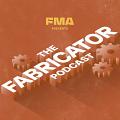
All Episodes
-
 Ep. 053
Ep. 053 -
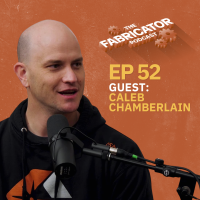 Ep. 052
Ep. 052 -
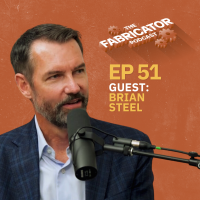 Ep. 051
Ep. 051 -
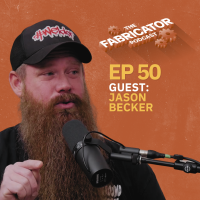 Ep. 050
Ep. 050 -
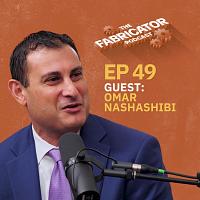 Ep. 049
Ep. 049 -
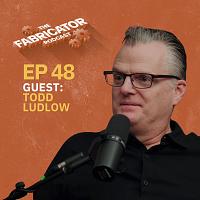 Ep. 048
Ep. 048 -
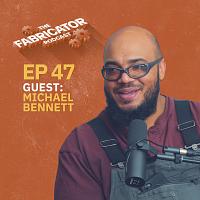 Ep. 047
Ep. 047 -
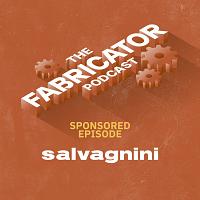 Bonus
Bonus -
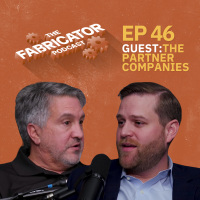 Ep. 046
Ep. 046 -
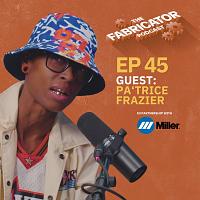 Ep. 045
Ep. 045 -
 Ep. 044
Ep. 044 -
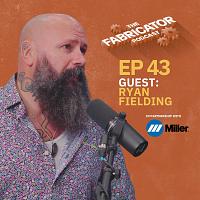 Ep. 043
Ep. 043 -
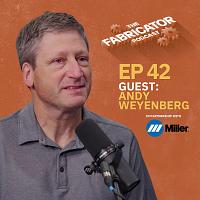 Ep. 042
Ep. 042 -
 Ep. 041
Ep. 041 -
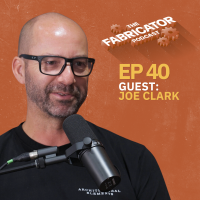 Ep. 040
Ep. 040 -
 Ep. 039
Ep. 039 -
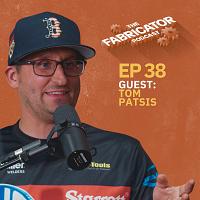 Ep. 038
Ep. 038 -
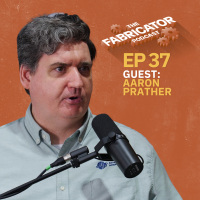 Ep. 037
Ep. 037 -
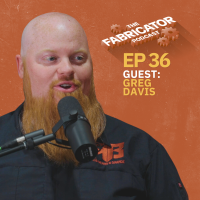 Ep. 036
Ep. 036 -
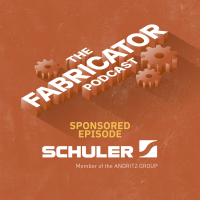 Bonus
Bonus -
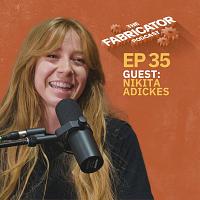 Ep. 035Breaking stereotypes in metalworking with Nikita Adickes of CTEK
Ep. 035Breaking stereotypes in metalworking with Nikita Adickes of CTEK -
 Ep. 034
Ep. 034 -
 Ep. 033
Ep. 033 -
 Ep. 032
Ep. 032 -
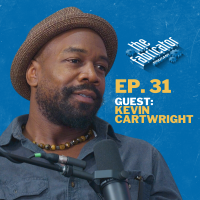 Ep. 031
Ep. 031

























